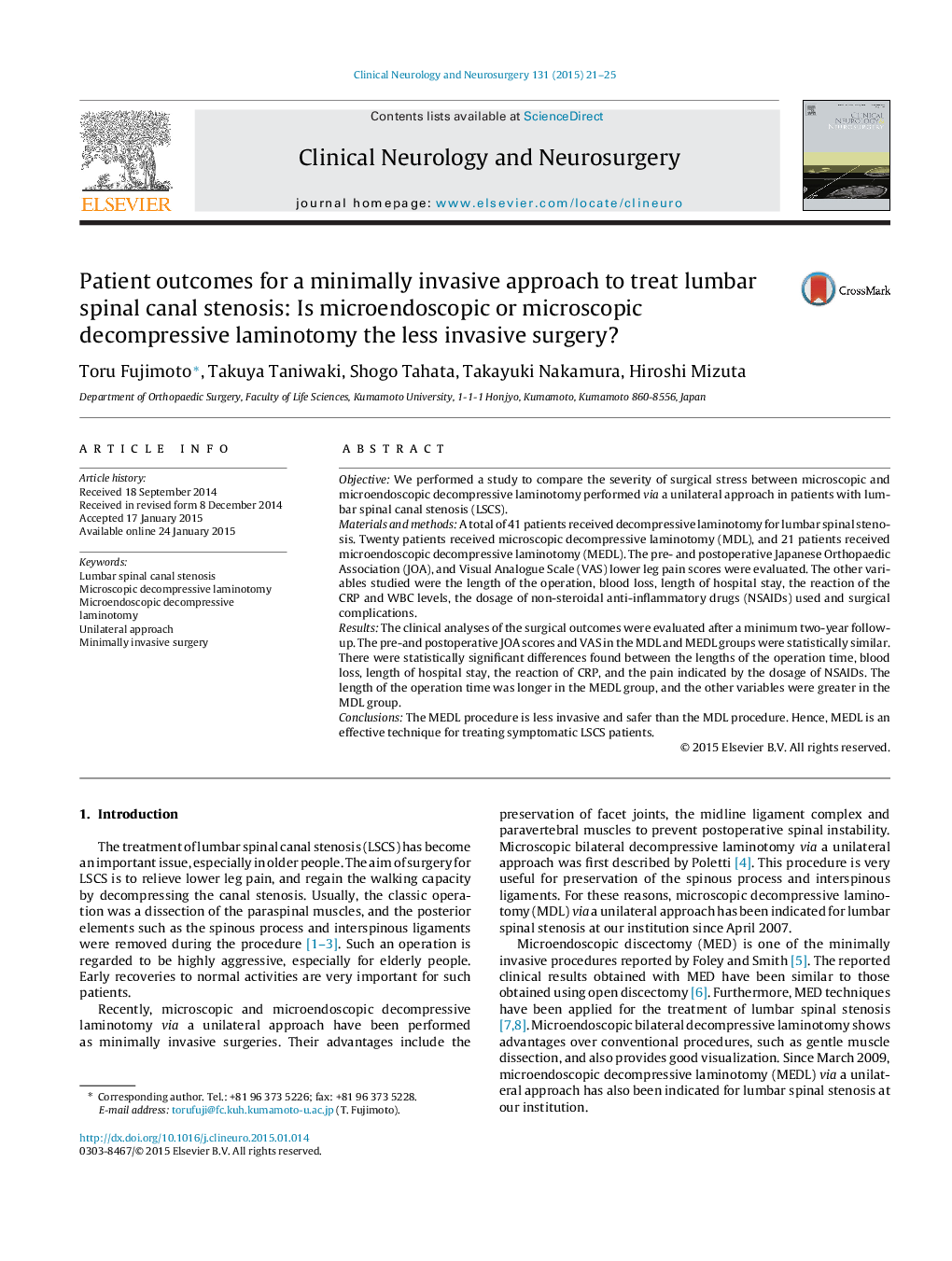| Article ID | Journal | Published Year | Pages | File Type |
|---|---|---|---|---|
| 3039943 | Clinical Neurology and Neurosurgery | 2015 | 5 Pages |
•Outcomes for a minimally invasive approach to treat lumbar spinal canal stenosis.•The MEDL procedure is less invasive and safer than the MDL procedure.•MEDL is an effective technique for treating symptomatic LSCS patients.
ObjectiveWe performed a study to compare the severity of surgical stress between microscopic and microendoscopic decompressive laminotomy performed via a unilateral approach in patients with lumbar spinal canal stenosis (LSCS).Materials and methodsA total of 41 patients received decompressive laminotomy for lumbar spinal stenosis. Twenty patients received microscopic decompressive laminotomy (MDL), and 21 patients received microendoscopic decompressive laminotomy (MEDL). The pre- and postoperative Japanese Orthopaedic Association (JOA), and Visual Analogue Scale (VAS) lower leg pain scores were evaluated. The other variables studied were the length of the operation, blood loss, length of hospital stay, the reaction of the CRP and WBC levels, the dosage of non-steroidal anti-inflammatory drugs (NSAIDs) used and surgical complications.ResultsThe clinical analyses of the surgical outcomes were evaluated after a minimum two-year follow-up. The pre-and postoperative JOA scores and VAS in the MDL and MEDL groups were statistically similar. There were statistically significant differences found between the lengths of the operation time, blood loss, length of hospital stay, the reaction of CRP, and the pain indicated by the dosage of NSAIDs. The length of the operation time was longer in the MEDL group, and the other variables were greater in the MDL group.ConclusionsThe MEDL procedure is less invasive and safer than the MDL procedure. Hence, MEDL is an effective technique for treating symptomatic LSCS patients.
